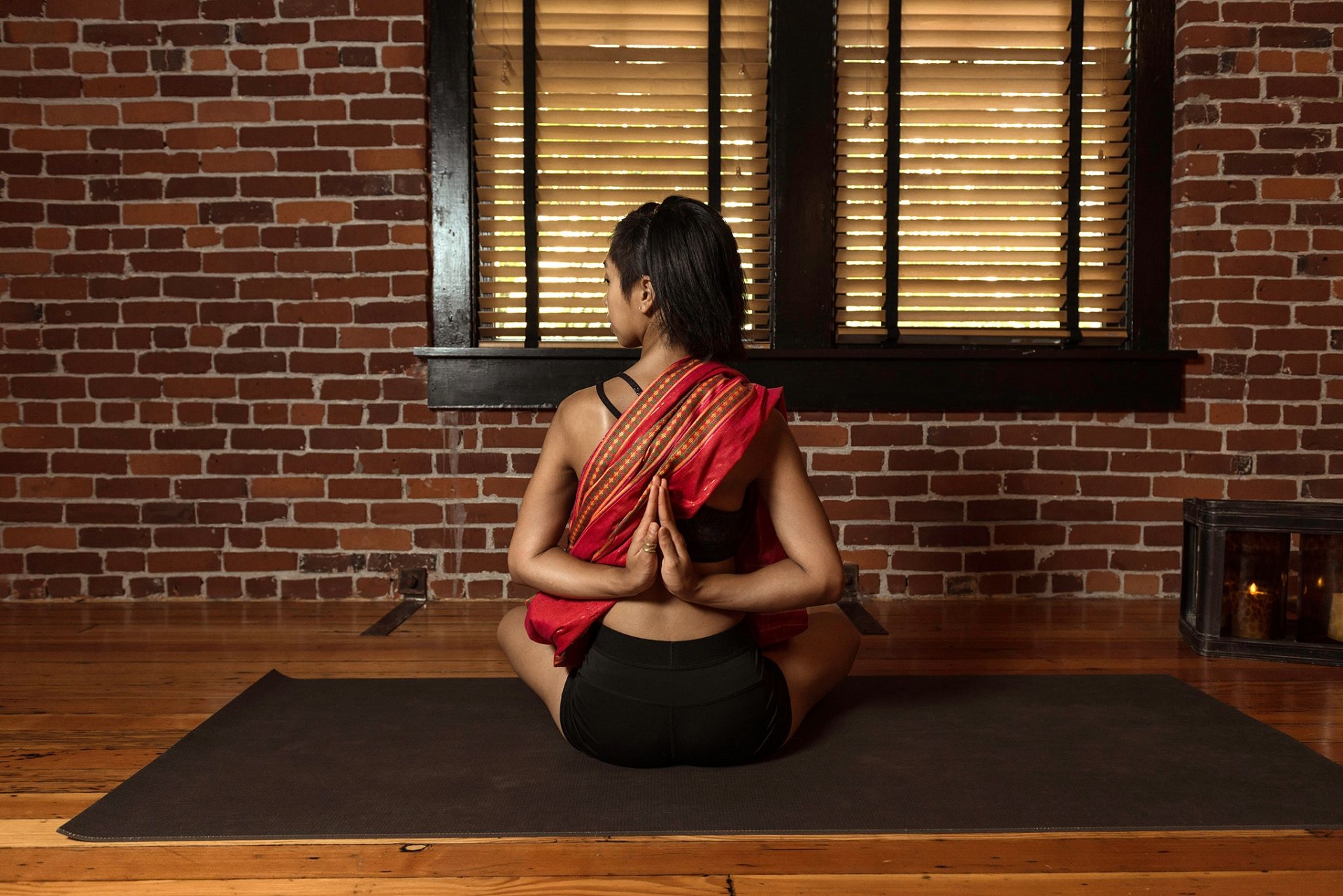By Trisha Elizarde-Miller, OCADSV Executive Administrative Assistant
Trisha Fey Yoga, 200-hr RYT

Service providers can often undergo vicarious trauma, which may happen after hearing survivors talk about their traumatic experiences. Even though the service provider may not be involved directly in the survivor’s trauma, they may feel the same effects of the trauma that is being described to them.
What can you do in moments when you are dealing with vicarious trauma? Developing a self-care plan for yourself is essential. The good news is, there are many self-care options available. One option I would like to introduce is mindfulness and body awareness, specifically through connecting to the breath with the body.
As a yoga practitioner and yoga teacher, I often go back to mind and body techniques that help with connecting back to the present moment and address what is going on viscerally. Here are a few mindfulness techniques to try after a situation that leaves you heightened.
- Meditative breathing: Sitting on a chair, come to the edge of the seat so that the knees are slightly below the waist. Start to draw awareness to the ground underneath your feet and feel how supported your feet are. Then focus on rooting the base of the pelvis down into the chair as you lift the crown of the head towards the sky. The hands can rest on the quads face up or down. Option to close the eyes or softly gaze 3 feet in front of you on the floor. Start to notice your breath, being aware of how it might have changed after witnessing a traumatic experience. Allow yourself to take several breaths in and out at your current pace. Then, start to invite a little bit more control in the breath. Start to fill the low belly with breath, send it to the rib cage, and then the chest. Slowly exhale the breath out starting from the chest, the rib cage, and then the low belly. Take a few rounds of breath like this, making sure you are focusing on starting your inhale at the low belly first. Release control of the breath.
- Heart opener: Often times when stress occurs, our body naturally caves itself in: shoulders droop and hunching of the back, resulting in compression in the chest. If space allows, come seated on your knees in front of a chair. Place the hands, forearms, and elbows on the chair, allowing the chest and gaze to go down towards the ground. Make sure that the hips are still stacked above the knees. Option to bend at the elbows towards your upper back and bring your hands to touch. Another version of this pose is to remain standing and instead use a table or desk for your arms. Continue to practice meditative breathing that was highlighted above, but this time sending the breath to the back of the heart space.
These are a couple techniques that you can try while dealing with vicarious trauma. Let me know how this works for you. If you have any questions, please don’t hesitate to contact me at trisha@ocadsv.org or www.facebook.com/trishafeyyoga